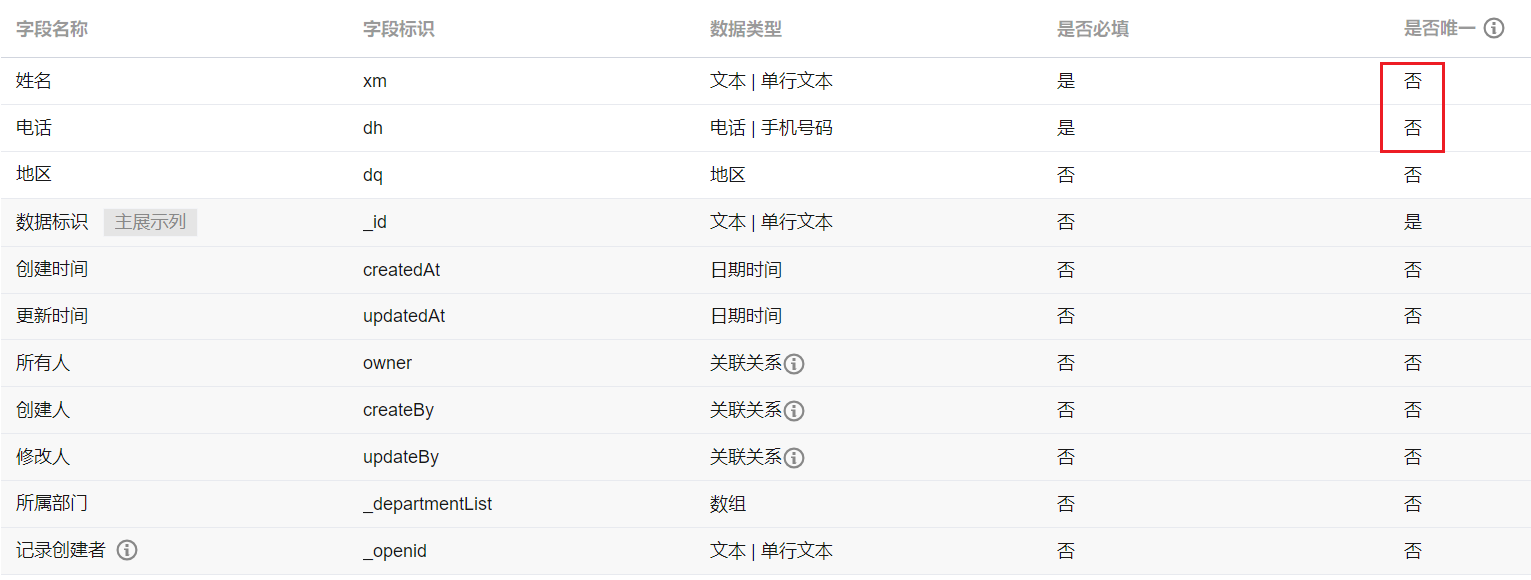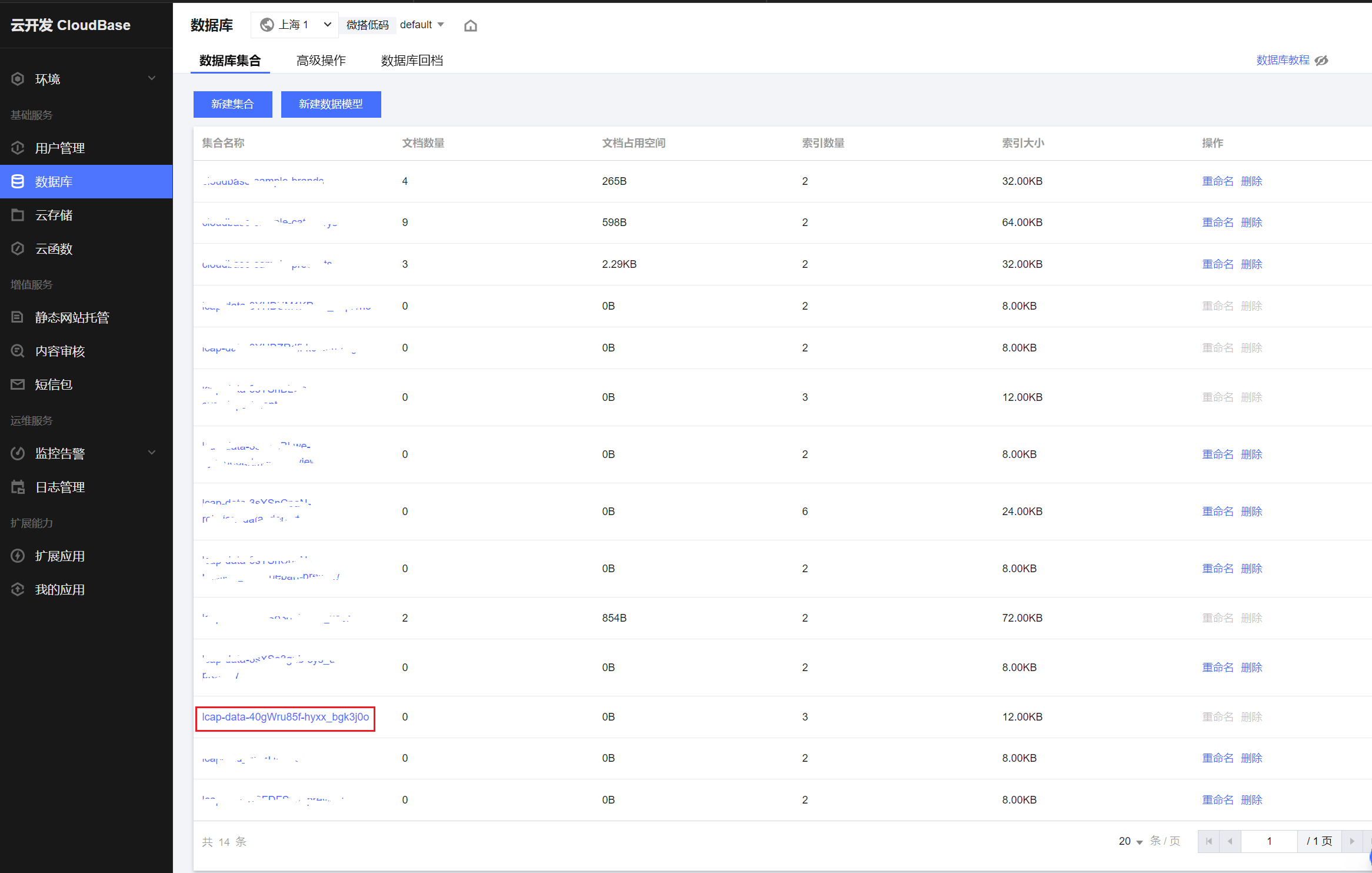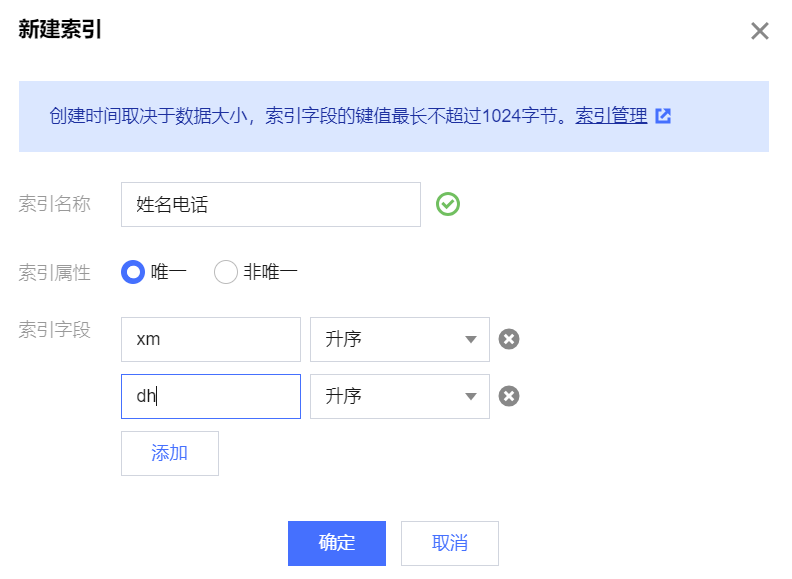How to Implement Uniqueness Validation Across Multiple Fields in a Data Model
In the data model, uniqueness validation can currently only be applied to individual fields. We can leverage the database's native capabilities to establish composite uniqueness constraints across multiple fields.
To learn about databases, you can refer to this document. Database
The following examples illustrate how to configure:
The Member Information Table records details such as name, phone, and region of registered members. It requires uniqueness validation for name+phone.
In the model, set the uniqueness constraint for name and phone to "No". Details are shown in the figure below.

In the "Basic Information" section, locate the corresponding collection name.

Then go to Cloud Development - Database and locate the corresponding collection.

Go to the collection and set a unique index on name+phone.


After completion, you can verify it in the data model. When attempting to add data that violates the name+phone uniqueness validation, an error will be returned.

Similar Questions
- How to set composite uniqueness for multiple fields in a data model?
- How to implement uniqueness validation across multiple fields in a database?
- How to validate the uniqueness of name+phone in a data model?
- What is the difference between single-field uniqueness validation and composite uniqueness validation for multiple fields in a data model?
- How to set up a unique index for multiple fields in a collection with Cloud Development?
- How to validate after setting up composite uniqueness for multiple fields?
- What happens when composite uniqueness validation fails in a data model?
- How to locate the target collection in a database to configure uniqueness?
- How to configure composite uniqueness for name and phone on the Cloud Development platform?
- How to check the effect of composite uniqueness settings for multiple fields in a data model?